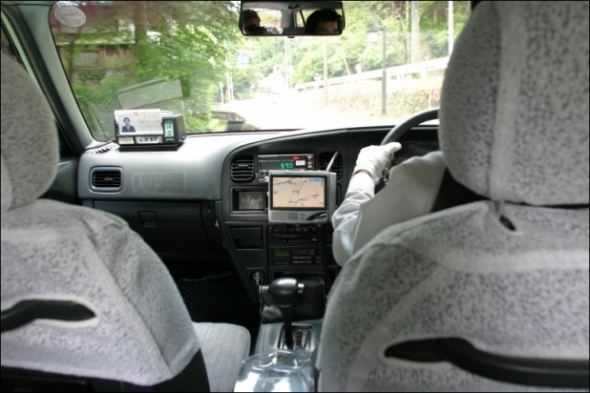Personal auto carriers are rapidly approaching a moment of truth when it comes to usage-based insurance (UBI) programs, in which a driver’s behavior is monitored via a telematics device. That goes both for insurers that have already launched such products, as well as those that have remained on the sidelines for a variety of reasons.
Early adopters of UBI are gaining a wealth of first-hand experience and insights that stand to provide a long-lasting competitive edge against insurers that until now have been undecided about whether or when to follow suit, as well as those either unwilling or unable to do so. The trailblazers are rapidly collecting a critical mass of data that can be analyzed to reveal driver behaviors that provide a basis for greater precision in underwriting and pricing.
For example, current rating methods would likely rate two drivers identically if they had the same credit scores, automobiles and demographics and lived in areas with similar geographic profiles. However, what if we knew through telematics observation that one of the insured persons drives her car one-tenth as much as the other, or at less risky times of the day? In that case, an insurer would be in a position to potentially leverage this new experiential information and underwrite the respective risks posed by the two drivers differently, as well as price coverage more accurately.
Having such first-hand driving data at their underwriters’ disposal could give existing UBI carriers a considerable leg up over those not using telematics, should the nonusers remain on the sidelines for long. For example, standard carriers could lose profitable policyholders who are cherry-picked by UBI-capable insurers that have acquired the capability to discern driver risk more granularly. Trying to catch up with the frontrunners in the UBI race is also likely to be costly—even more so as time goes on and the early birds get a bigger head start.
Of course, early adopters still face many challenges in executing a viable telematics program. For one, widespread consumer acceptance is no certainty, given privacy concerns for some and skepticism among others as to whether having their driving so closely scrutinized will benefit them in the end, or perhaps even be used against them in a number of ways—and not just by their auto insurer. Indeed, a January 2014 survey by the Deloitte Center for Financial Services exploring consumer use of mobile devices in financial services reveals that about half of the overall driving population is not open to the idea of UBI—at least for the moment.
In addition, while regulators have been supportive in the early stages of telematics development, down the road their acceptance may depend on a number of factors, including the eventual impact on rates for those who fail to meet whatever standards are attributed to “less risky” drivers. There may also be regulatory resistance if drivers face higher prices just because they choose not to be monitored, for whatever reason.
Wherever a carrier stands on the subject, we may have already reached the point of no return when it comes to telematics and UBI. The genie is out of the bottle. The industry as a whole is not likely to go back to relying only on its traditional methods of assessing auto risks. A growing number of carriers will likely adopt behavioral-based telematics as a way to at least supplement traditional underwriting factors.
Indeed, before too long the use of sensory technologies that permit behavioral underwriting by insurers is likely to be expanded beyond auto insurance into homeowners, life and health coverages, and perhaps even non-auto commercial lines as well, such as workers’ compensation. Smart homes, biometric monitoring, wearable technologies and the Internet of Things are all developing trends that could support and accelerate such initiatives.
But even if UBI is merely part of the natural evolution of auto insurance underwriting in an increasingly data-driven age, carriers of all stripes will likely need a strategy to respond to those that embrace telematics. Some will decide to go along for the ride, while the rest will have to figure out alternative routes to survive and prosper.
How big is the market for UBI products?
For a variety of reasons, UBI programs based on telematics data-gathering will probably not be for every driver. Indeed, our general hypothesis that only certain segments will permit their driving to be monitored by insurers was validated by Deloitte’s recent survey, which examined mobile technology experience, perceptions and expectations among financial services consumers. The survey, conducted in January 2014, drew 2,193 respondents representing a wide variety of demographic groups, broken down by age and income, split evenly in terms of gender.
Respondents were asked about their willingness to be monitored by auto insurers through an app on their smartphone, as opposed to having to install an additional piece of equipment into their vehicle, or having a car in which such equipment was already included by the manufacturer.
While most drivers who have signed up for telematics programs are currently monitored by a special device that’s part of their vehicle, going forward it’s likely that such technology could be largely displaced by a mobile app. Not only would the use of smartphones for telematics monitoring lower insurer costs for device distribution and retrieval as well as data transmission, the technology would also enable consumers to get more immediate feedback.
The survey identified three distinct groups among respondents when asked whether they would agree to allow an insurer to track their driving experience through their mobile device if it meant they would be eligible for premium discounts based on their performance. They were:
Eager beavers: More than one in four said they would allow such monitoring, without stipulating any specific minimum discount in return.
Fence sitters: The same percentage of respondents were a bit more cautious, noting they might get on board with UBI if the price was right, given a high enough discount to make it worth their while.
Naysayers: A little less than half said they would not be interested in having their driving monitored under any circumstances.
Among those who were open to the idea of telematics monitoring, about one in five expect a discount of 10% or less, with the vast majority anticipating 6% to 10%. About half expect between 11% and 20% (with 27% anticipating between 11% and 15%), while nearly one-third think they would be entitled to discounts greater than 20%.
When broken down by various demographic factors, age was the biggest differentiator. Nearly two-thirds of respondents aged 21–29 were willing to give UBI a go, compared with only 44% of those 60 or older. More than twice as many in the 21–29 age category than in the 60-or-older group (35% vs. 15%) said yes to telematics without stipulating a particular discount. This trend was somewhat less pronounced but still significant when comparing respondents under 30 with those in the 46–59 segment, among whom only 24% would allow monitoring with no stipulated discount.
Younger respondents were also less likely to expect a discount of greater than 20%—26% of the under-30 crowd compared with 38% of those aged 46–59. This could be because fewer older consumers are open to the idea of monitoring in the first place (perhaps out of “Big Brother” concerns, or the fact that they did not grow up in a fully Web-connected environment), and therefore would demand a bigger financial incentive before allowing an insurer to monitor their driving. Or it could be that the older segment, making more money on average than the youngest segment, is less likely to be won over by a relatively small discount—at least in dollar terms.
Income was not a differentiating factor, which was surprising considering that one might expect those with less discretionary funds to place more emphasis on how much they would save on their auto insurance premiums by signing on to a UBI program. Yet, only about 30% of both the highest (above $100,000) and lowest (below $50,000) income groups surveyed said the size of the discount would determine whether they would allow their driving to be monitored. Expectations about the size of the discount in return for signing on were also similar across income segments.
However, given the fact that higher-income consumers are generally considered potentially more valuable to insurers, seeing a significant segment of that coveted group open to the idea of UBI without worrying about the size of the discount could be a positive factor for telematics marketers.
While gender did not make a major difference in whether a respondent would allow insurers to monitor their driving, women did generally expect a higher discount for doing so, with 59% anticipating a rate break of 16% or higher (including 34% who expect more than 20%) compared with 48% among men (with 28% looking for a discount of 20% or higher).
What are the implications?
Looking at the big picture, with nearly half of the respondents in this survey indicating that UBI is not for them, a bifurcated market may eventually develop, with those who choose to be monitored representing a separate class of drivers who are underwritten in a different way, supplementing at first and perhaps later supplanting traditional pricing factors. In the end, serving the “naysayers” may become a specialty market niche for some carriers.
Still, this research, along with our interviews with insurer executives and media reports of UBI programs being tested or rolled out across the country appears to indicate that there is indeed a significant consumer segment ready, willing and able to at least test-drive telematics-based auto insurance programs. But that doesn’t mean the road to achieving growth and profitability through telematics is without speed bumps, potholes and other potential hazards.
Kevin Bingham is sharing this excerpt on behalf of the authors, Sam Friedman and Michelle Canaan, who can be reached through him. The full report, Overcoming Speed Bumps on the Way to Telematics, can be found here.





